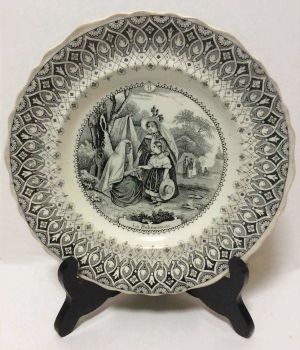Palmistry and Palm Readers
In this installment of "Your Wate and Fate," we take a sneak-peek look at an upcoming page that will eventually be on display to the public. As a Patreon supporter, you have access to the page one full year before the public does.
- Patreon Release Date: September 15th, 2021
- Public Release Date: September 15th, 2022.
Please tell your friends that they can subscribe to my Patreon stream for $2.00 per week:
To discuss this and other Your Wate and Fate pages with me, join my private Patreon Forum here:
As a form of divination, palmistry combines character analysis with fortune telling. Most readers consider it to be one of the more scientific forms of prediction, because a great many of the features of the hand are determined by genetics, including the presence of congenital diseases and the likelihood of the sitter following a career that an ancestor also pursued.
As far as i can tell, the scientific study of palm reading began or became widely popular in India, centuries ago. It travelled to Europe with the Romani people, who date their movement westaward to the time of Alexander the Great, and still maintain many Indian customs and beliefs.
Hand reading was soon associated with Romani practitioners in Eastern Europe. As these people, wrongly called "Gypsies" by Europeans who thought that they had come from Egypt, moved Westward into Europe and Great Britain, they actually brought two popular forms of fortune telling with them — palm reading and fortune telling with birds. Both of these were practiced in public, by women, the Romani men being mostly horse trainers, dealers, and brokers, a hereditary trade in their culture, and a vital part of their nomadic lifestyle. That nomadic life, which led to their unaccountability to local authorities, also led to discrimination against the Romani, and an othering of their way of life. Words like mysterious, exotic, strange, and weird were attached to them.
Eventually, because so many settled in the region then known as Bohemia (now the Czech Republic), they came to be known as Bohemians, a word that, in turn, came to mean anyone, from any culture or region, who chooses to live outside of society's conventional norms. The Bohemian lifestyle was one of freedom, eccentricity, and reduced accountability to the capitalist state. These days the derivative fashion term Boho refers to garments that are free flowing, with long skirts and full sleeves, resembling the clothes of the 19th century Romani in Bohemia.
Some of the first experiences Americans and Europeans had with palmistry as a form of character analysis or fortune telling was with Romani women who read their hands. In the 19th century, the Romani were forbidden to set up shops or permanent dwellings, and lived in camps outside of towns, coming in to trade at towns during feast days, market days, and fairs. The bolder seekers after fortunes would ride or walk out to the "Gypsy camp" to have their futures told.

